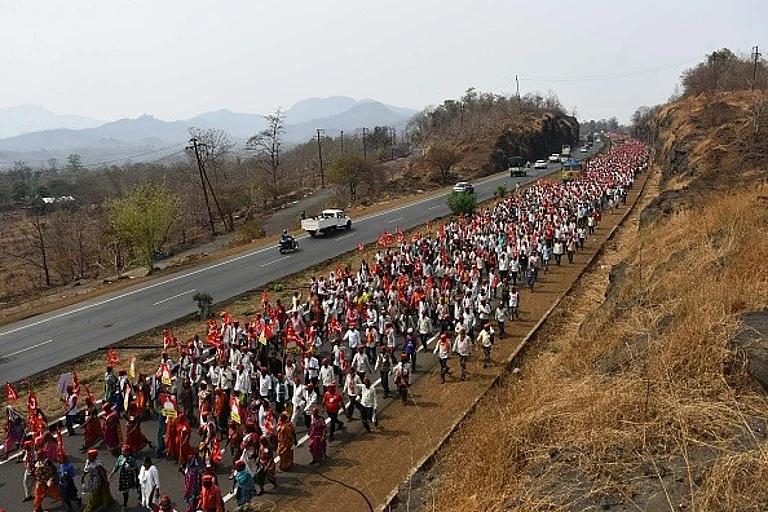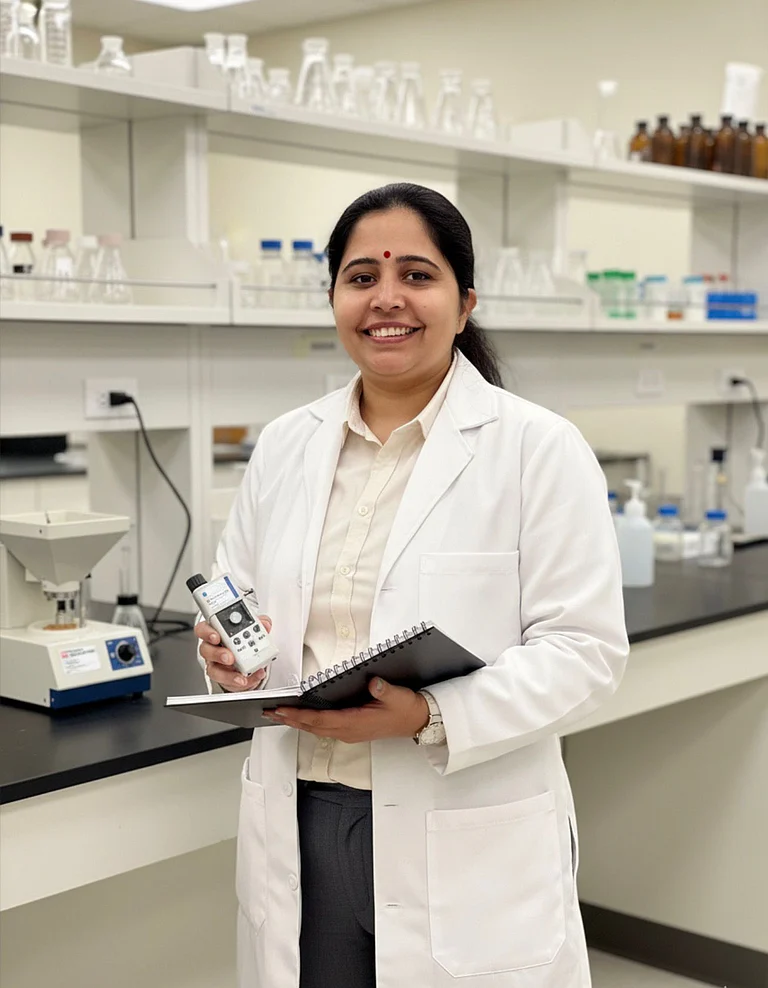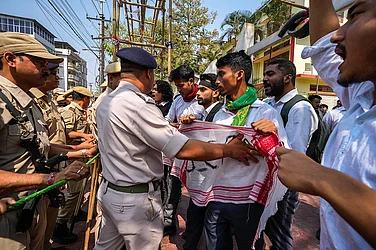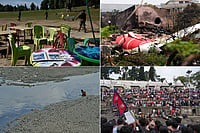Tipri, a village in scenic Bhaderwah, called Chota Kashmir for its beauty, was once predominantly a maize-growing area. However, the crop was not fetching much return as monkeys and bears would damage the crop extensively. The villagers decided to switch to a different crop but had no idea what to do.
In 2010, Touqeer Baghban, 37, started cultivating lavender in his fields in Bhaderwah. He had obtained the crop from Kashmir, where it has been cultivated for the past forty years at CSIR IIIM Field Station Bonera, Pulwama in South Kashmir.
Lavender oil was in demand, and with climate change and wildlife interference affecting their maize crops, Baghban saw lavender as a promising alternative. Year after year, he gave up cultivating maize and adopted lavender. Lavender, a perennial shrub, is a hardy, robust crop that thrives in dry areas with abundant sunshine and temperate places like Bhaderwah proved heaven for the crop. With rivers and streams drying up during summers, and untimely glacial discharge, farmers in Bhaderwah followed Baghban and slowly switched over to lavender. Lavender requires less water and is more resilient to these changing climatic conditions.
“One major advantage of lavender is that it does not require pesticides because it is not infested with any disease or insect incidence, making it more sustainable,” says Baghban.
In 1970, lavender was brought to Kashmir from Bulgaria by Dr Akhtar Hussain. At the time, he was the Scientist In-charge of the Field Station. He introduced lavender cultivation at Field Station Pulwama which is about 35 km south of Srinagar.
Despite all odds, Dr Hussain believed that lavender in J&K could be a viable alternative crop to ensure increased farm profitability. However, lavender cultivation didn’t spread across J&K.
Baghban says that Ghulam Nabi Azad first proposed the idea of cultivating lavender in Bhaderwah during his tenure as the Chief Minister of J&K. Azad, he says, held several meetings in the region, encouraging farmers to consider this new venture.
In 2009, Dr Ram Vishwakarma, as Director CSIR IIIM Jammu, deputed a team from the Institute to carry out an extensive survey for the feasibility of introducing lavender on farmers’ fields across J&K and based on this, the crop was extensively introduced among farmers motivating them to grow it on barren land first.
Bhaderwah took the lead. From a few farmers in 2009 to 2,500 farmers at present, Chota Kashmir started giving up conventional maize farming to nurture lavender cultivation and 2.5 lakh plants were provided to farmers who accepted the crop with excitement.
The Minister for Science and Technology Dr Jitendra Singh says “Bhaderwah has emerged as the lavender capital of India and agri startup destination.” The government says that last year under the CSIR-Aroma Mission, CSIR-IIIM provided more than 30 lakh free lavender plants to the farmers in different districts of J&K.
"Climate change has little impact on lavender compared to maize or paddy. You don’t need to cultivate it every year. Once you grow it, it will be there for the next 20 years. Except for maintaining weed-free fields the crop does not require much inter-cultura operations, you don’t have to do anything," says Baghban.
The Central government brought lavender farming under the CSIR Aroma Mission, providing plants for free to farmers. Initially, farmers would get 2 to 3 litres of lavender oil from one kanal (one kanal = 0.8 acres). However, prices started dwindling when France and Bulgaria decreased their lavender oil prices, creating difficulties for the farmers. The farmers would now get Rs 3,000 to Rs 4,000 per litre. They began agitating, asking the government to buy it.
Bulgaria is the biggest producer of lavender oil in the world, generating around 50 per cent of the world's lavender oil. Bulgaria produces 100 MT-130 MT of lavender oil from around 3,500 hectares of farmland. "We studied the crises and surveyed the market. We realised there was also a demand for dry lavender flowers,” says Bagban. “I encouraged farmers to do the same. For lavender oil, the government provided us with distillation units, but extracting oil was not an easy task. On the other hand, producing dry flowers was easy for us, and it was difficult for other countries to export flowers to the Indian market because of logistical reasons.”
He says that this saved farmers from the process of extracting oil while fetching them more profit, as producing dry flowers doesn't require any specific expertise. “There are a lot of rumours about lavender going around…but it is a current alternative to other crops given the long dry spells which we see in the region," Baghban adds. The lavender farming community in Bhaderwah is now market-oriented. "If we realise that the market demands oil, we will extract oil; if it demands dry flowers, we will provide the same,” says Baghban.
Dr Shahid Rasool, Senior Scientist at CSIR-Indian Institute of Integrative Medicine, Jammu, and Scientist in charge of its Field Station at Bonera, Pulwama, says that for the past few years, lavender cultivation has added a purple tint to fields and sloppy land tracts in J&K, especially in Bhaderwah. Dr Shahid along with Dr S Chandra initially carried out the lavender survey in the region in 2009. He says that with governmental support through initiatives like CSIR Aroma Mission, Start Up India Scheme, and other farmer and industry-oriented initiatives, the present pace of expansion of newer areas under lavender cultivation and favourable climatic conditions, J&K could surpass Bulgaria in the production of lavender.



























